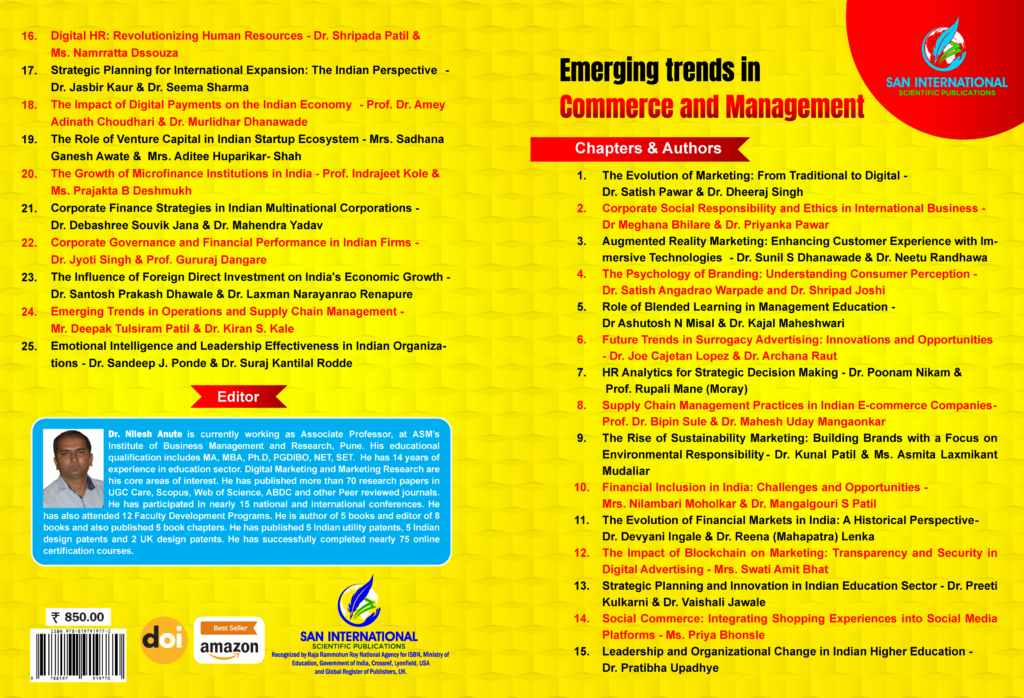Book Title: Emerging Trends in Commerce and Management
Editor: Dr. Nilesh Anute
ISBN: 978-81-979197-7-0
Chapter: 13
DOI: https://doi.org/10.59646/emc13/255
Authors:
Dr. Preeti Kulkarni, Director, Dr. Moonje Institute of Management and Computer Studies, Pune, Maharashtra, India.
Dr. Vaishali Jawale, Associate Professor, ASM’s IBMR, Pune, Maharashtra, India.
Learning Objectives
The Indian education industry relies heavily on strategic planning and innovation for its progress. Strategic planning is the process of establishing goals, evaluating available resources, and devising policies to effectively accomplish long-term objectives. This is crucial for effectively tackling issues such as accessibility, quality, and relevance. Innovation involves developments in technology, teaching methods, and organisational changes. It aims to meet the requirements of various learners and ensure equal access to high-quality education. Nevertheless, the Indian education system encounters obstacles such as limitations in infrastructure and socio-economic inequalities, which require joint endeavours from both the government and private sectors. To successfully execute innovation, it is crucial to cultivate a culture that encourages experimentation and establish strategic relationships. It is essential to anticipate the future and adopt important developments such as personalised learning and digitization.
References
- Anute N, Patil H (2023) Significance of Distance Education And E Learning In Higher Education System In India, The Online Journal of Distance Education and e-Learning, Volume 11, Issue 1, Page no. 324-337.
- Haas, J.T. O’Conner, R.L. Tucker, J.A. Eickmann, W.R. Fagerlund, Prefabrication and Preassembly Trends and Effects on the Construction Workforce, Center for Construction Industry Studies, 2000.
- Mandi, P.K. Roy, D. Sasmal, Growth of Gross Domestic Product (GDP) by Economic Activity of Different Sectors in India.Advanced, Journal of Humanities & Social Sciences (AJHSS) 1 (1) (2022) 28–54.

